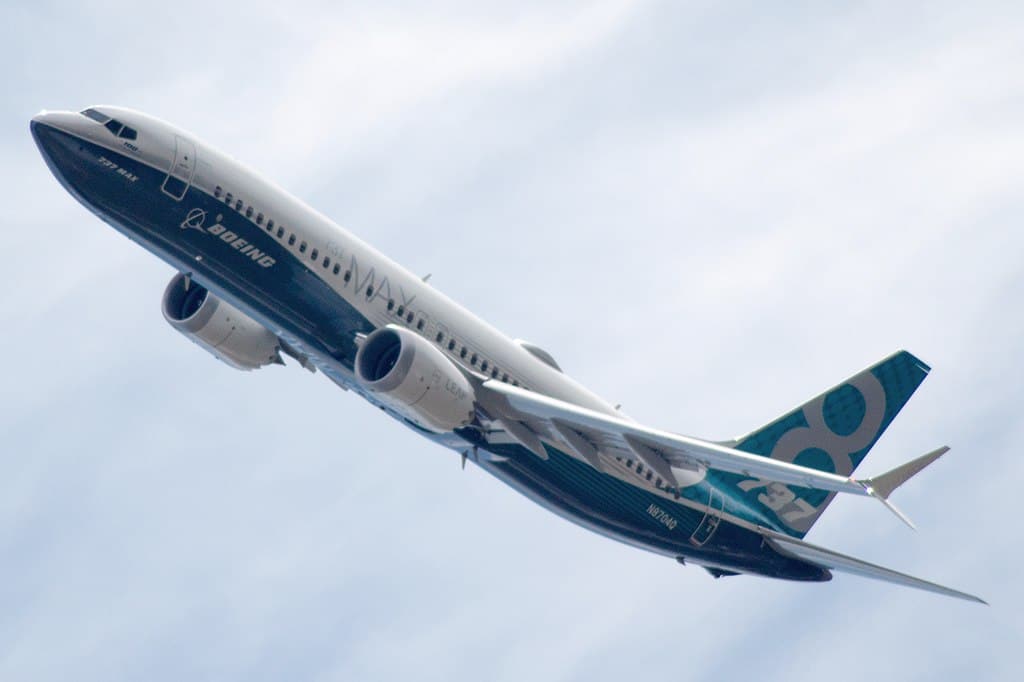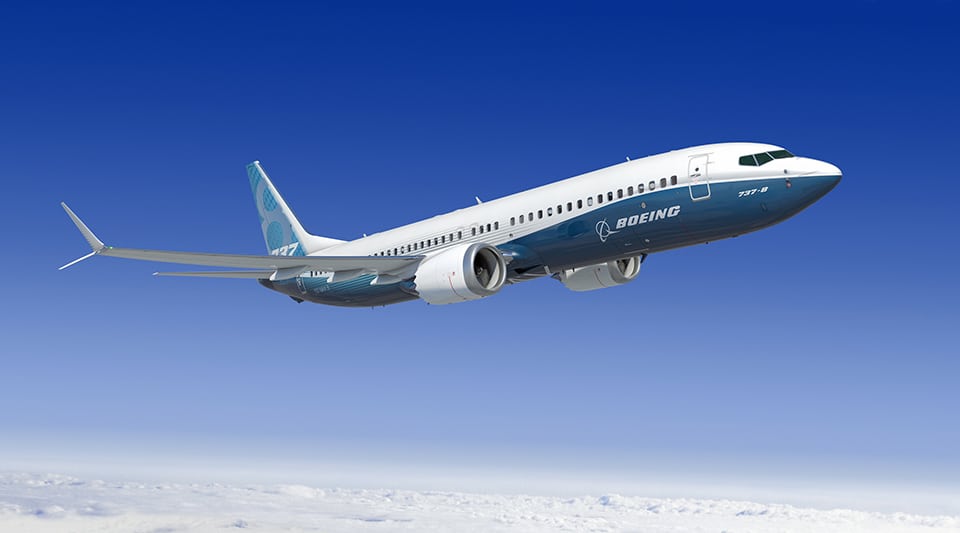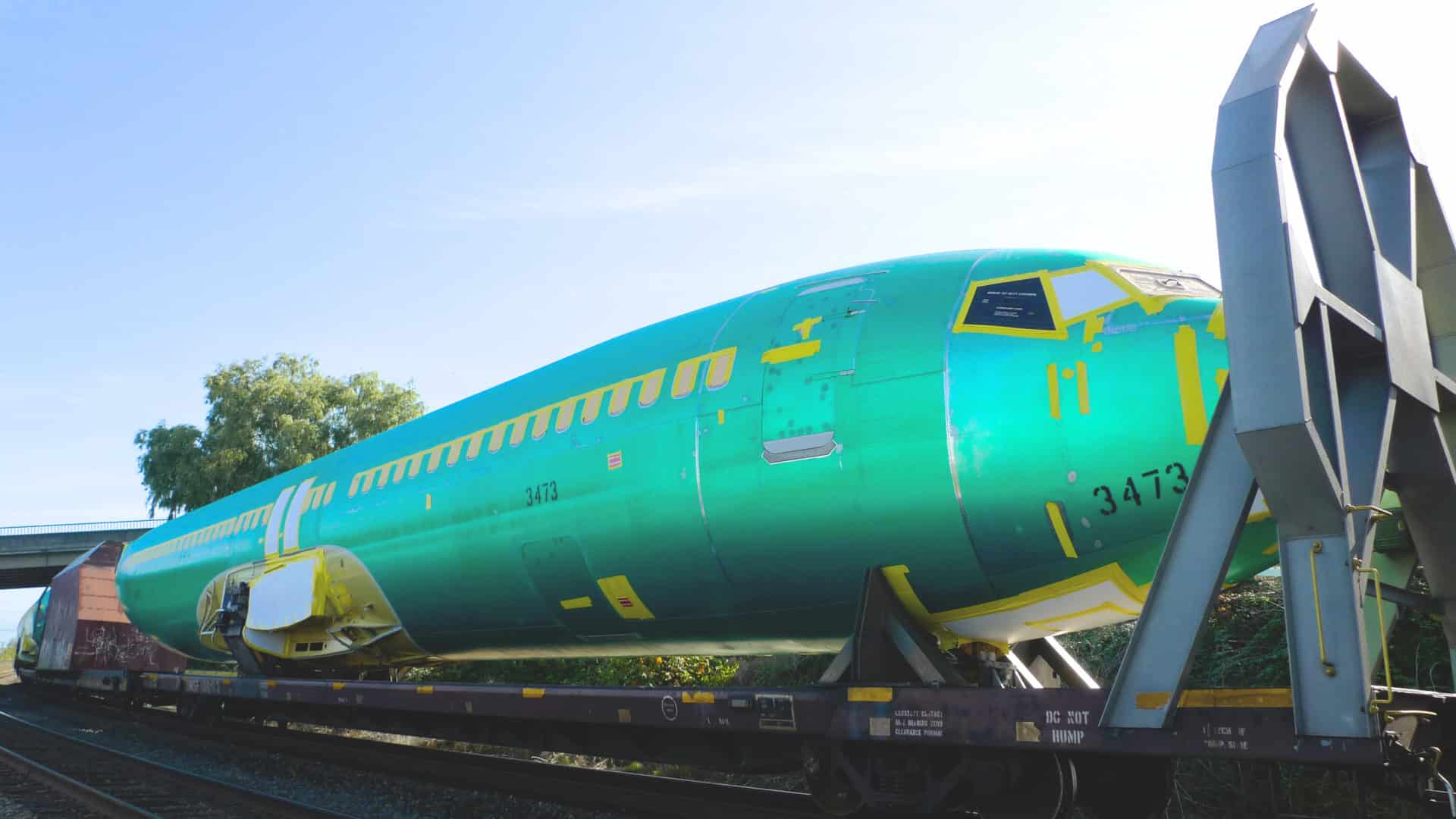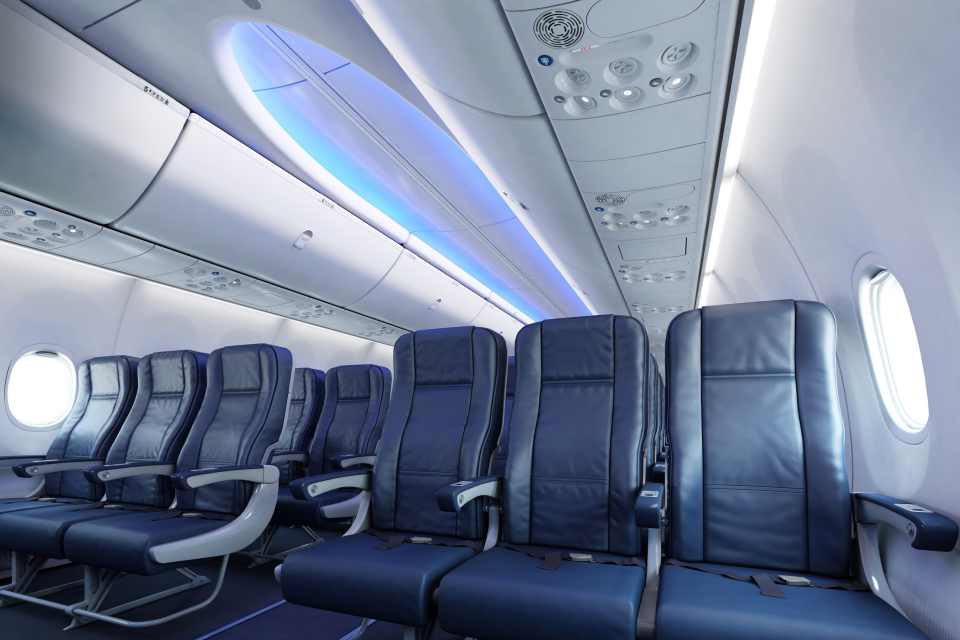Airlines
10 things about Boeing 737 max aircraft.
The Boeing 737 Max is the most recent model of aircraft produced by the Boeing company, and it boasts a number of advantages over earlier models

The Boeing 737 Max is the most recent model of aircraft produced by the Boeing company, and it boasts several advantages over earlier models. We shall learn what features have been introduced to this aircraft in this article.
No 1. Establishment of Boeing 737 max
The Boeing 737 Max is an enhanced version of the 737. Boeing is the manufacturer of this airliner’s narrow body. In the market, it faces up against the Airbus A320 family. On January 29, 2016, the Boeing 737 Max made its inaugural flight. the Federal Aviation Administration certified it
No2. Flight deck and Twin-Engine Airliner
The flight deck can house the pilot and a co-pilot and is equipped with a common display system supplied by Honeywell Air Transport Systems. The CDS consists of six flat-panel liquid crystal displays, and new line of aircraft is designed to provide consumers in the single-aisle category better fuel efficiency. To reduce weight, the flying controls use fly-by-wire spoilers rather than a mechanical system. To increase cabin pressurization, the aircraft has electronic bleed air systems and anti-icing equipment. The 737 MAX’s interior is outfitted with the popular Boeing Sky Interior.
A sustainable source of power LEAP-1B engine provides Boeing 737 MAX operators with improved performance in terms of fuel consumption and CO2 emissions (15 percent ), NOx emissions, and noise emissions (up to 50 percent). The list price for the engine purchase is US$348 million , and deliveries are expected to start in 2022. The LEAP-1B-powered Boeing 737 MAX aircraft is a key element.
No 4. Feature about 737 max
The 737 MAX is Boeing’s most modern 737 to date in terms of technology. New, fuel-efficient engines and advanced flight deck layout are features of the 737 MAX. It has much more efficient LEAP-1B engines that offer higher fuel economy. A more tapered aerodynamic tail cone. This is part of the design advancement to achieve up to a 1% improvement in fuel economy. Boeing 787-style engine nacelles with a scalloped casing that allows for cleaner airflow and less drag.
No 5. 737 MAX Winglet has Natural Laminar Flow
Natural Laminar Flow is present on the 737 MAX at Winglet. Boeing solves this with the “Natural Laminar Flow” properties of the 737 MAX AT Winglet by using detailed design, surface materials, and coatings that enable laminar – or smoother – airflow over the winglet. This reduces drag and improves fuel efficiency.
No 6.The 737 Max have a new wing
Boeing has the very latest in advanced winglet technology, the 737 MAX AT Winglet. In addition to the inward, upward and slightly forward lift components of the upper aerofoil, the new lower aerofoil generates a vertical lift component that is vectored away from the fuselage, and also slightly forward. Working together, these provide the perfectly balanced winglet that maximizes the overall efficiency of the wing. Believing there was even more efficiency to be gained on top of the benefits from this ingenious solution.
No 7. Boeing uses iPads to train 737 max pilots
Boeing used iPads to deliver two-hour lessons about the airplane. It also gave pilots a 13-page handbook explaining the differences between the 737 MAX and earlier 737 models. Pilots are often trained on new airplanes with simulators. some pilots could fly the aircraft because its workings were similar to the regular Boeing 737 series. Boeing insisted that simulator training was unnecessary even after American Airlines and Southwest Airline pilots complained of the airplane’s unusual flight pattern.

Airlines
Air China Makes Landmark Deal: Orders 100 C919 Jets from COMAC
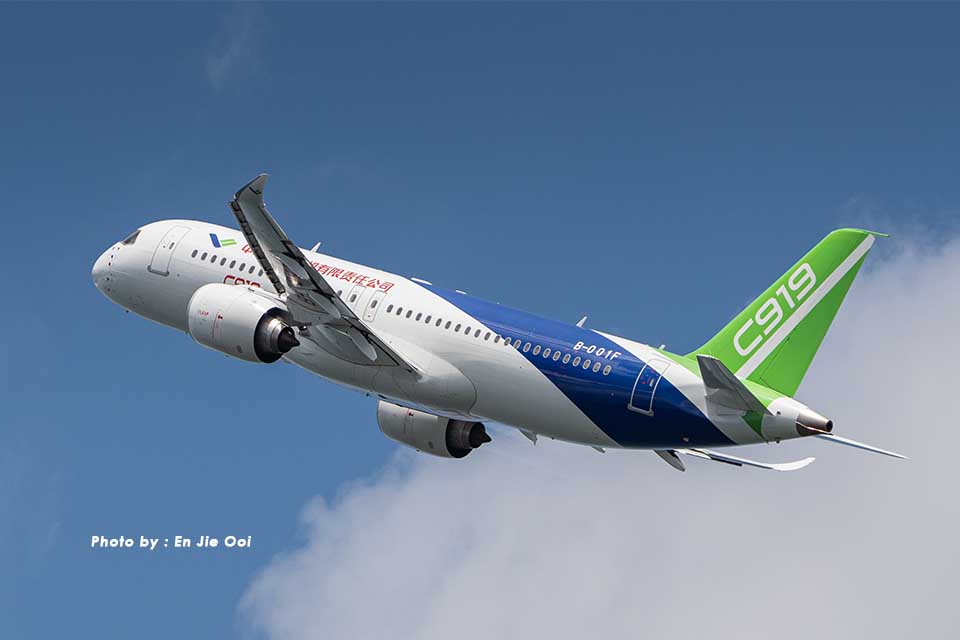
In a strategic move that could reshape China’s aviation industry, Air China has inked a monumental deal with Comac, signaling a significant shift in the nation’s commercial aircraft procurement landscape.
The agreement, valued at a staggering $10.8 billion based on list prices, entails the purchase of 100 Comac C919 jets, a resounding endorsement of the homegrown challenger to aerospace giants Airbus and Boeing.
The announcement, disclosed in a filing by Air China, underscores the airline’s commitment to bolstering its fleet with domestically manufactured aircraft. These C919 jets, slated for delivery between 2024 and 2031, are poised to amplify Air China’s operational capabilities and enhance its competitive stance in the global aviation arena.
The C919, a formidable competitor to Boeing’s 737 Max and Airbus’s A320neo, symbolizes China’s ambitious foray into the global aviation market. With Air China’s commitment to acquiring a substantial fleet of C919s, the aircraft is poised to carve out a formidable niche in the industry, challenging the dominance of established players.
Notably, Air China‘s existing fleet comprises an extensive array of Airbus and Boeing aircraft, showcasing its diverse operational portfolio.
With nearly 500 airplanes in service, including models from the A320 family and the 737 series, Air China’s decision to incorporate the C919 into its fleet underscores a strategic diversification strategy.
While Airbus has enjoyed notable success in China, buoyed by its local assembly line, Boeing has faced formidable challenges in recent years. However, Air China’s resolute investment in the C919 signals a paradigm shift, amplifying China’s quest for self-sufficiency in aviation.
Airlines
IndiGo, India’s Leading Airline, Orders 30 Airbus A350-900 Aircraft
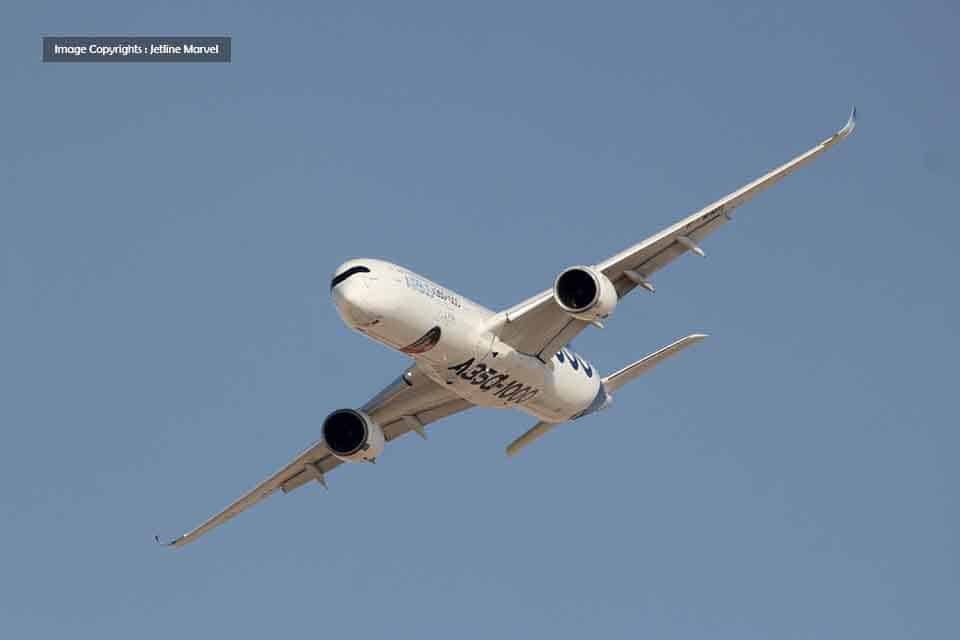
.
Today, IndiGo, India’s leading low-cost carrier, made headlines by placing its largest-ever order for A350 aircraft. This substantial move follows Air India’s order last year, signaling IndiGo’s strategic expansion into the wide-body aircraft market.
The Airbus A350, renowned for its advanced technology and spacious design, has become a prime choice among airlines worldwide. IndiGo’s decision to invest in the A350 stems from its growing international route network, where larger capacity and extended range are essential.
Following the announcement, IndiGo’s stock prices surged, reflecting investor confidence in the airline’s ambitious growth plans. The initial order encompasses 30 jets, with options for an additional 70 aircraft in the future. While specific configurations are pending, IndiGo is inclined towards the A350-900 variant, favored by many airlines for its versatility.
Indian aviation enthusiasts have eagerly welcomed IndiGo’s bold move, anticipating the arrival of the A350-900 aircraft starting in 2027. Furthermore, the airline retains purchase rights for an impressive 70 more A350 family aircraft, signaling its long-term commitment to enhancing its fleet and expanding its global footprint.
Airlines
US DOT says Airlines must now pay automatic refunds for cancelled flights
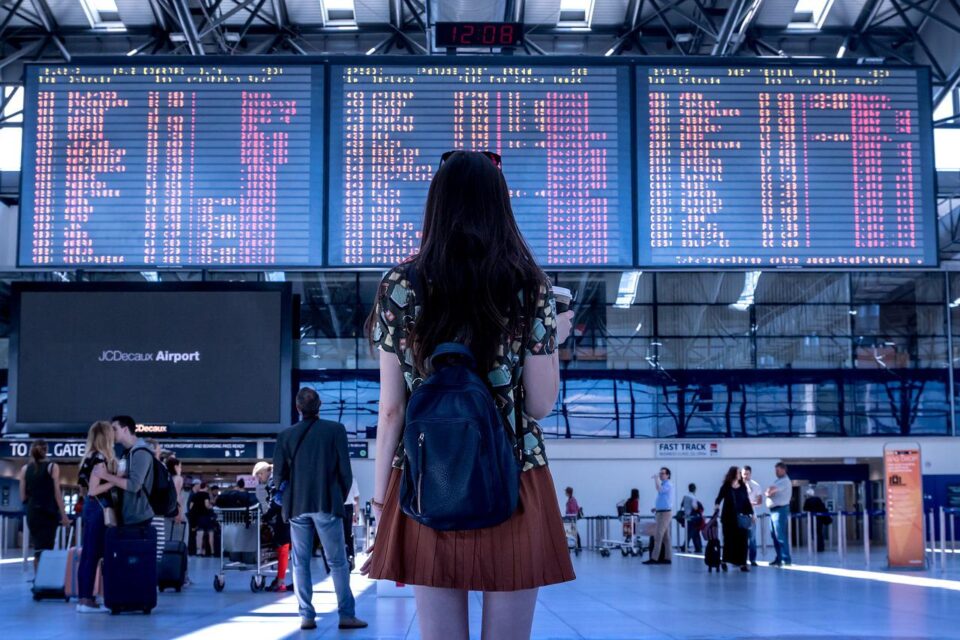
The U.S. Department of Transportation (DOT) has released a final regulation requiring airlines to quickly reimburse passengers with automatic cash refunds when owed, according to a statement made by the Biden-Harris Administration.
Under the new regulation, passengers will find it easier to get refunds when airlines dramatically alter or cancel flights, cause severe delays for checked baggage, or don’t supply the additional services they paid for.
According to a statement from the Biden-Harris Administration, the U.S. Department of Transportation (DOT) has published a final rule mandating airlines to promptly compensate customers with automatic cash refunds when they are eligible. The new rule would make it simpler for customers to receive refunds from airlines in cases when they drastically change or cancel flights, cause significant delays for checked luggage, or fail to provide the extra services they charged for.
Under the latest rule from the USDOT, passengers are guaranteed refunds in several scenarios:
- Canceled or Significantly Changed Flights: Passengers are entitled to refunds if their flight is canceled or significantly altered, including changes in departure or arrival times exceeding 3 hours domestically or 6 hours internationally, departures or arrivals from different airports, increased connections, downgrades in service class, or changes less accommodating to passengers with disabilities.
- Delayed Baggage Return: Passengers filing mishandled baggage reports can claim a refund for checked bag fees if their luggage is not returned within specific timeframes after flight arrival.
- Unprovided Extra Services: If airlines fail to deliver paid extra services like Wi-Fi, seat selection, or inflight entertainment, passengers can request refunds for those fees.
The final rule streamlines the refund process, ensuring it is:
- Automatic: Refunds are issued automatically without requiring passengers to request them.
- Prompt: Airlines must refund credit card purchases within seven business days and other payment methods within 20 calendar days.
- In Original Form of Payment: Refunds are provided in the original payment method used for purchase.
- Full Amount: Passengers receive full refunds minus the value of any portion of transportation already used, including government and airline fees.
Suggest banning family seating junk fees and ensuring that parents can travel with their kids at no additional cost. No airline promised to ensure fee-free family seating prior to efforts from President Biden and Secretary Buttigieg last year. Family seating is now guaranteed free of charge on four airlines, and the Department is working on a plan to eliminate family seating junk fees.
Propose to make passenger compensation and amenities mandatory so that travelers are taken care of when airlines cause flight delays or cancellations.

